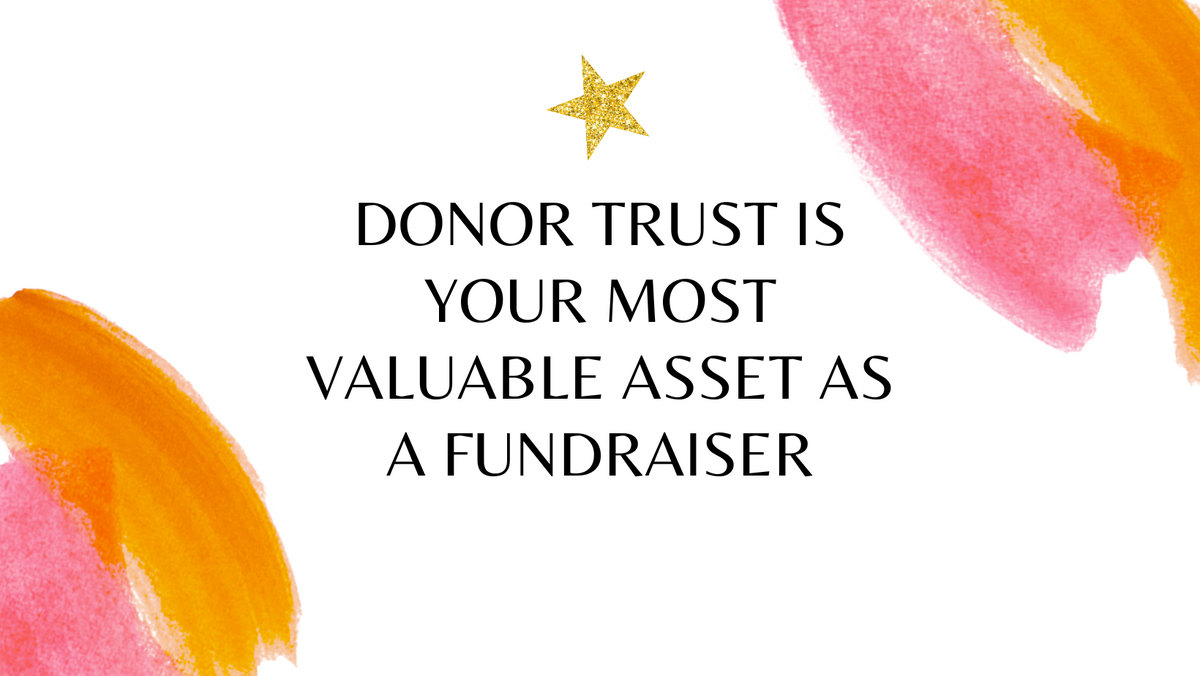Table of Contents
Trust lies at the heart of every good relationship. Donor relationships are no exception.
There is a lot of complexity when it comes to family relationships or romantic partners. In contrast, donor relationships can be maintained and cultivated with ease if you have the right strategies in place.
There are 3 things you need to focus on if you want to build trust-based donor relationships:
- Connecting with your existing donors
- Improving donor gift acknowledgments
- Refining your stewardship strategy
Connecting with Your Existing Donors
It helps me to think of each donor as a friend. Every communication, whether it is via email, print, or SMS, needs to be personalized. The donor needs to feel like it was written to her, for her. The use of personalization and personal language creates a level of intimacy and connectedness that will drive future donations.
The channel you use to connect with each of your donors will vary according to your team’s capacity and the size of your donor portfolio. Use donor segmentation (e.g. major donors vs. small, one-time gifts) to guide personalization and the channels of communication used.
Improving donor gift acknowledgments
A rule of thumb to live by: thank a donor within 24-48 hours of their gift.
It’s best if you can deliver a prompt thank you via telephone. It’s even more effective if YOU or a board member can make the thank you phone call.
There is a lot of research that shows a prompt thank you call improves not only donor retention but also donor lifetime value.
If you can’t scale phone calls, ensure you create an email automation that goes out to every single person who donates. And prioritize phone calls to gifts that hit the mid-to-major gift level threshold.
Refining your stewardship strategy
A stewardship or cultivation strategy deepens your relationships with donors. This is critical for not only securing future gifts but receiving transformational, major gifts.
Improving donor gift acknowledgment falls under the "donor stewardship" category. But donor stewardship encompasses far more than a “thank you."
Think of donor stewardship as a fresh dating relationship. Sure, there is the first date (which we will liken to the first gift acknowledgment). But for a second date, third date, and thriving relationship to develop, there must be phone calls, text messages, and frequent expressions of love and value.
If love, appreciation, and closeness aren't cultivated... there will be no relationship.
Cultivation centers around connecting with your donors and sharing stories of the impact their gift made possible. Don’t make the common mistake of saying YOUR organization did a good thing. Ensure you tell your donor SHE made that good thing happen. Always give her the credit.
Wrapping it up
Your BEST days, months, and years of fundraising won’t come from extensive prospect research. It’s unlikely to come from corporate sponsors or grants.
The best way to maximize your fundraising efforts (both now and later) is to zero in on your current donors by providing prompt gift acknowledgments and investing in them as if they were your best friend!

Member discussion: